Dual Channel S-Band Frequency Modulated Continuous Wave Through-Wall Radar Imaging
Abstract
:1. Introduction
2. System Model
3. Conventional FMCW TWRI Systems
3.1. Subspace Projection Approach
3.2. SAR-Based Approach
4. 3D Subspace-Based TWRI Algorithm
4.1. Phase Shift Characteristics
- Range-induced phase shift κm:
- DOA-induced phase shift ξm:
- Doppler-induced phase shift ρm:
4.2. 3D Smoothed Hankel Matrix
4.3. Subspace Separation with SVD
4.4. 3D Pseudo-Spectrum for TWRI
5. Experiments
5.1. Experiment Setup
5.2. Experiment Results
6. Conclusions
Acknowledgments
Author Contributions
Conflicts of Interest
References
- Charvat, G.L.; Kempel, L.C.; Rothwell, E.J.; Coleman, C.M.; Mokole, E.L. A through-dielectric radar imaging system. IEEE Trans. Antennas Propag. 2010, 58, 2594–2603. [Google Scholar] [CrossRef]
- Qian, J.; Ahmad, F.; Amin, M.G. Joint localization of stationary and moving targets behind walls using sparse scene recovery. J. Electron. Imaging 2013, 22. [Google Scholar] [CrossRef]
- Amin, M.G. Through-The-Wall Radar Imaging; CRC Press: Boca Raton, FL, USA, 2010. [Google Scholar]
- Gennarelli, G.; Ludeno, G.; Soldovieri, F. Real-Time Through-Wall Situation Awareness Using a Microwave Doppler Radar Sensor. Remote Sens. 2016, 8, 621. [Google Scholar] [CrossRef]
- Yoon, Y.S.; Amin, M.G. Spatial Filtering for Wall-Clutter Mitigation in Through-the-Wall Radar Imaging. IEEE Trans. Geosci. Remote Sens. 2009, 47, 3192–3208. [Google Scholar] [CrossRef]
- Liu, J.; Kong, L.; Yang, X.; Liu, Q.H. Refraction Angle Approximation Algorithm for Wall Compensation in TWRI. IEEE Geosci. Remote Sens. Lett. 2016, 13, 943–946. [Google Scholar] [CrossRef]
- Debes, C.; Zoubir, A.M.; Amin, M.G. Enhanced Detection Using Target Polarization Signatures in Through-the-Wall Radar Imaging. IEEE Trans. Geosci. Remote Sens. 2012, 50, 1968–1979. [Google Scholar] [CrossRef]
- Sachs, J.; Aftanas, M.; Crabbe, S.; Drutarovsky, M.; Klukas, R.; Kocur, D.; Nguyen, T.T.; Peyerl, P.; Rovnakova, J.; Zaikov, E. Detection and tracking of moving or trapped people hidden by obstacles using ultrawideband pseudo-noise radar. In Proceedings of the 2008 European Radar Conference (EuRAD), Amsterdam, The Netherlands, 30–31 October 2008; pp. 408–411. [Google Scholar]
- Browne, K.E.; Burkholder, R.J.; Volakis, J.L. Through-wall opportunistic sensing system utilizing a low-cost flat-panel array. IEEE Trans. Antennas Propag. 2011, 59, 859–868. [Google Scholar] [CrossRef]
- Biying, L.; Song, Q.; Zhou, Z.; Wang, H. A SFCW radar for through wall imaging and motion detection. In Proceedings of the European Radar Conference (EuRAD), Manchester, UK, 12–14 October 2011; pp. 325–328. [Google Scholar]
- Biying, L.; Song, Q.; Zhou, Z.; Zhang, X. Detection of human beings in motion behind the wall using SAR interferogram. IEEE Geosci. Remote Sens. Lett. 2012, 9, 968–971. [Google Scholar] [CrossRef]
- Maaref, N.; Millot, P. Array-based UWB FMCW through-the-wall radar. In Proceedings of the 2012 IEEE Antennas and Propagation Society International Symposium (APSURSI), Chicago, IL, USA, 8–14 July 2012; pp. 1–2. [Google Scholar]
- Maaref, N.; Millot, P. Array-based ultrawideband through-wall radar: Prediction and assessment of real radar abilities. Int. J. Antennas Propag. 2013, 2013. [Google Scholar] [CrossRef]
- Charvat, G.L.; Kempel, L.C.; Rothwell, E.J.; Coleman, C.M.; Mokole, E.L. A through-dielectric ultrawideband (UWB) switchedantenna-array radar imaging system. IEEE Trans. Antennas Propag. 2012, 60, 5495–5500. [Google Scholar] [CrossRef]
- Ralston, T.S.; Charvat, G.L.; Peabody, J.E. Real-time through-wall imaging using an ultrawideband multiple-input multiple-output (MIMO) phased array radar system. In Proceedings of the IEEE International Symposium on Phased Array Systems and Technology (ARRAY 2010), Waltham, MA, USA, 12–15 October 2010; pp. 551–558. [Google Scholar]
- Peabody, J.; Charvat, G.L.; Goodwin, J.; Tobias, M. Through-Wall Imaging Radar. Linc. Lab. J. 2012, 19, 62–72. [Google Scholar]
- Ahmad, F.; Amin, M.G. Through-the-wall radar imaging experiments. In Proceedings of the IEEE Workshop on Signal Processing Applications for Public Safety and Forensics, Washington, DC, USA, 11–13 April 2007; pp. 132–136. [Google Scholar]
- Hantscher, S.; Reisenzahn, A.; Diskus, C.G. An UWB wall scanner based on a shape estimating SAR algorithm. In Proceedings of the IEEE/MTT-S Microwave Symposium, Honolulu, HI, USA, 3–8 June 2007; pp. 1458–1461. [Google Scholar]
- Hantscher, S.; Praher, B.; Reisenzahm, A.; Diskus, C.G. 2D imaging algorithm for the evaluation of UWB B-Scans. In Proceedings of the IEEE Conference on Ultrawideband and Ultrashort Impulse Signals, Sevastopol, Ukraine, 18–22 September 2006; pp. 139–141. [Google Scholar]
- Thajudeen, C.; Hoorfar, A. A Hybrid Bistatic–Monostatic Radar Technique for Calibration-Free Estimation of Lossy Wall Parameters. IEEE Antennas Wirel. Propag. Lett. 2017, 16, 1249–1252. [Google Scholar] [CrossRef]
- Lang, S.A.; Demming, M.; Jaeschke, T.; Noujeim, K.M.; Konynenberg, A.; Pohl, N. 3D SAR imaging for dry wall inspection using an 80 GHz FMCW radar with 25 GHz bandwidth. In Proceedings of the 2015 IEEE MTT-S International Microwave Symposium, Phoenix, AZ, USA, 17–22 May 2015; pp. 1–4. [Google Scholar] [CrossRef]
- Sevigny, P.; DiFilippo, D.J.; Laneve, T.; Fournier, J. Indoor imagery with a 3D through-wall synthetic aperture radar. In Proceedings of the SPIE 8361, Radar Sensor Technology XVI, Baltimore, MD, USA, 4 May 2012; pp. 1–7. [Google Scholar] [CrossRef]
- Amin, M.G.; Ahmad, F. Wideband synthetic aperture beamforming for through-the-wall imaging [Lecture Notes]. IEEE Signal Process. Mag. 2008, 25, 110–113. [Google Scholar] [CrossRef]
- Seng, C.H.; Amin, M.G.; Ahmad, F.; Bouzerdoum, A. Image Segmentations for Through-the-Wall Radar Target Detection. IEEE Trans. Aerosp. Electron. Syst. 2013, 49, 1869–1896. [Google Scholar] [CrossRef]
- Leigsnering, M.; Ahmad, F.; Amin, M.G.; Zoubir, A.M. CS based wall ringing and reverberation mitigation for through-the-wall radar imaging. In Proceedings of the 2013 IEEE Radar Conference (RadarCon13), Ottawa, ON, USA, 29 April–3 May 2013; pp. 1–5. [Google Scholar] [CrossRef]
- Leigsnering, M.; Ahmad, F.; Amin, M.; Zoubir, A. Multipath exploitation in through-the-wall radar imaging using sparse reconstruction. IEEE Trans. Aerosp. Electron. Syst. 2014, 50, 920–939. [Google Scholar] [CrossRef]
- Winkler, V. Range Doppler detection for automotive FMCW radars. In Proceedings of the 2007 European Radar Conference, Munich, Germany, 10–12 October 2007; pp. 166–169. [Google Scholar] [CrossRef]
- Tivive, F.H.C.; Bouzerdoum, A. An improved SVD-based wall clutter mitigation method for through-the-wall radar imaging. In Proceedings of the 2013 IEEE 14th Workshop on Signal Processing Advances in Wireless Communications (SPAWC), Darmstadt, Germany, 16–19 June 2013; pp. 430–434. [Google Scholar] [CrossRef]
- Tivive, F.H.C.; Bouzerdoum, A.; Amin, M.G. A Subspace Projection Approach for Wall Clutter Mitigation in Through-the-Wall Radar Imaging. IEEE Trans. Geosci. Remote Sens. 2015, 53, 2108–2122. [Google Scholar] [CrossRef]
- Meta, A. Signal Processing of FMCW Synthetic Aperture Radar Data. Available online: http://resolver.tudelft.nl/uuid:24352ff9-c11a-46c9-87d4-4d9d8968ed81 (accessed on 10 August 2017).
- Dehmollaian, M.; Thiel, M.; Sarabandi, K. Through-the-Wall Imaging Using Differential SAR. IEEE Trans. Geosci. Remote Sens. 2009, 47, 1289–1296. [Google Scholar] [CrossRef]
- Li, G.; Burkholder, R.J. Hybrid matching pursuit for distributed through-wall radar imaging. IEEE Trans. Antennas Propag. 2015, 63, 1701–1711. [Google Scholar] [CrossRef]
- Ahmad, F.; Amin, M.G.; Kassam, S.A. Synthetic aperture beamformer for imaging through a dielectric wall. IEEE Trans. Aerosp. Electron. Syst. 2005, 41, 271–283. [Google Scholar] [CrossRef]
- Hua, Y.; Sarkar, T.K. Matrix pencil method for estimating parameters of exponentially damped/undamped sinusoids in noise. IEEE Trans. Acoust. Speech Signal Process. 1990, 38, 814–824. [Google Scholar] [CrossRef]
- Wax, M.; Kailath, T. Detection of signals by information theoretic criteria. IEEE Trans. Acoust. Speech Signal Process. 1985, ASSP-33, 387–392. [Google Scholar] [CrossRef]
- Oh, D.; Lee, J. Robust Super-Resolution TOA Estimation against Doppler Shift for Vehicle Tracking. IEEE Commun. Lett. 2014, 18, 745–748. [Google Scholar] [CrossRef]

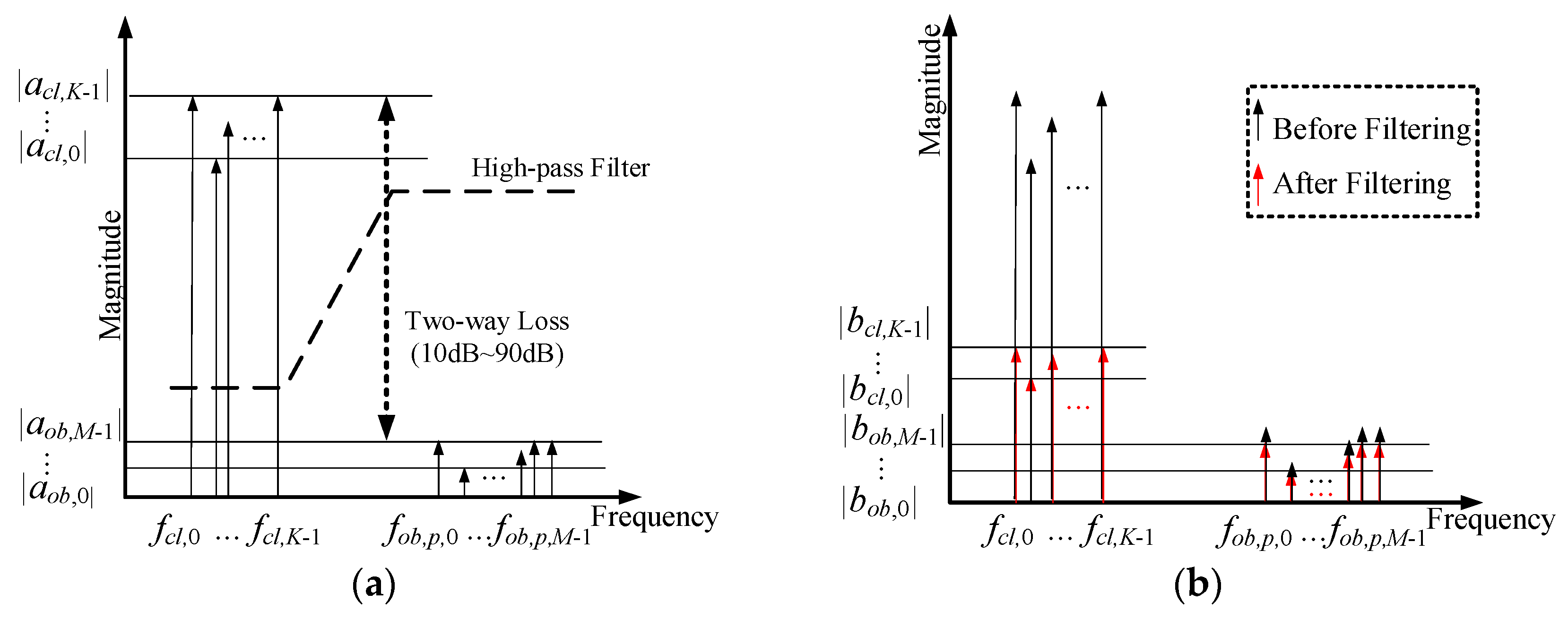
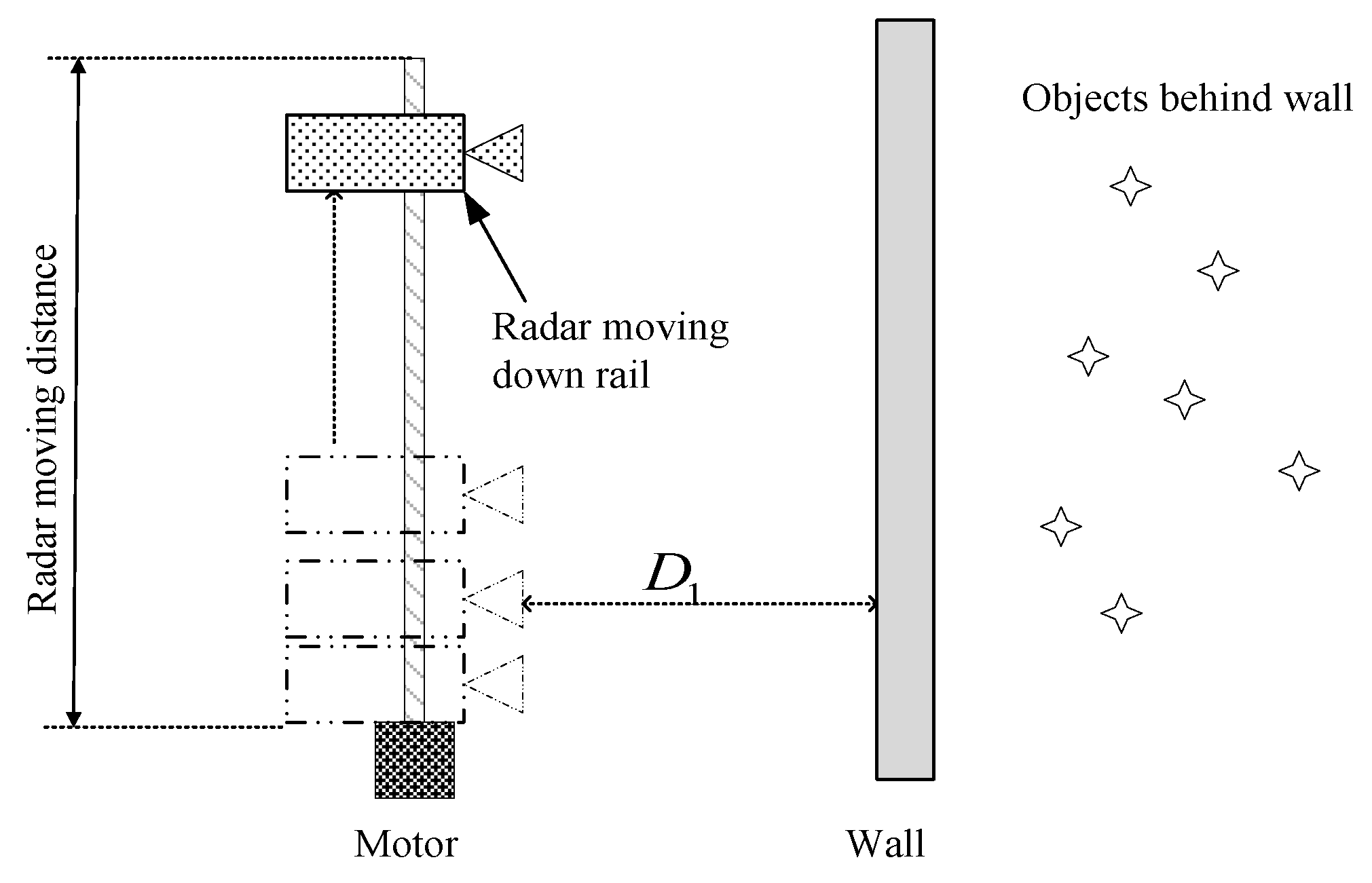
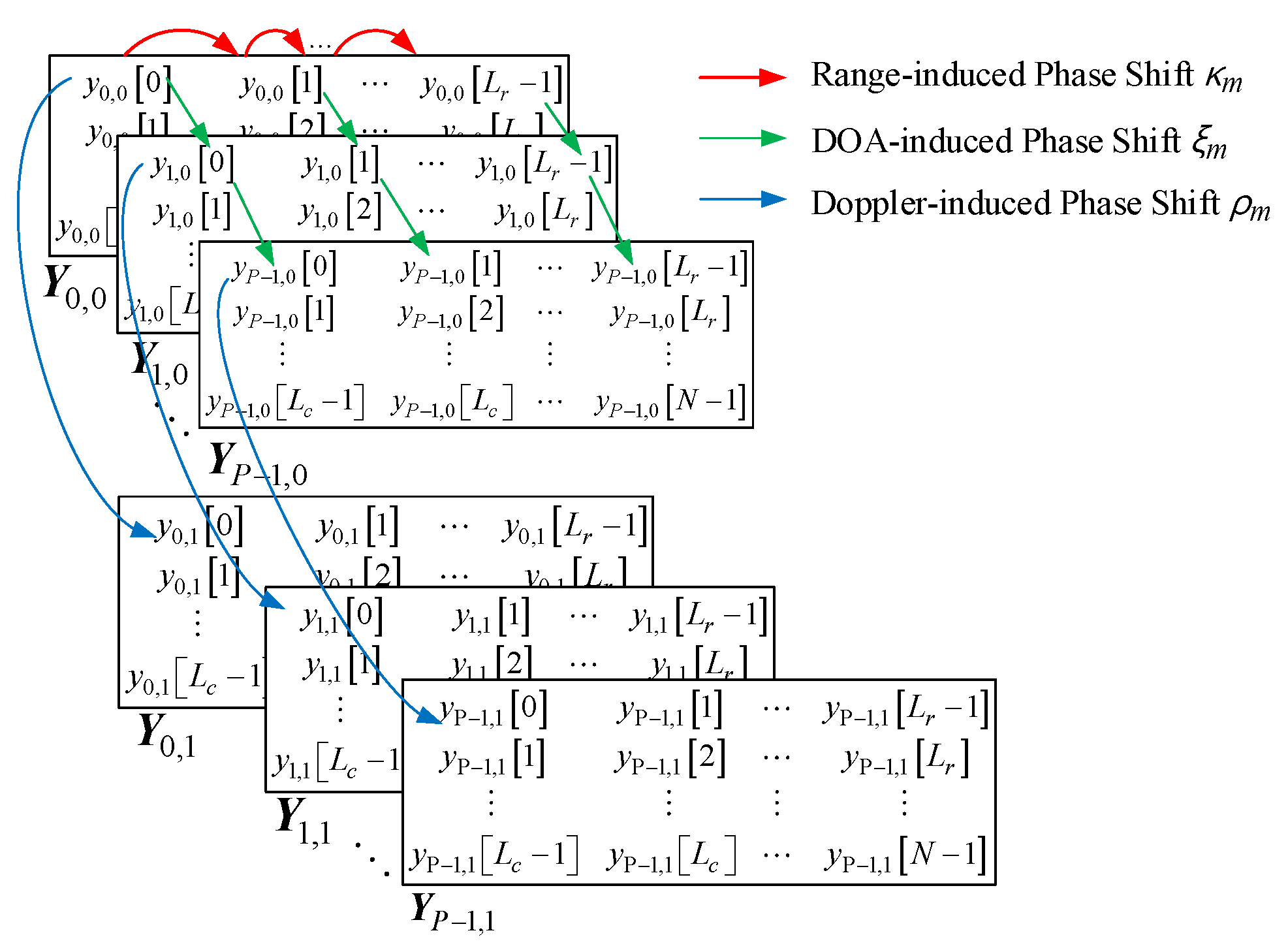
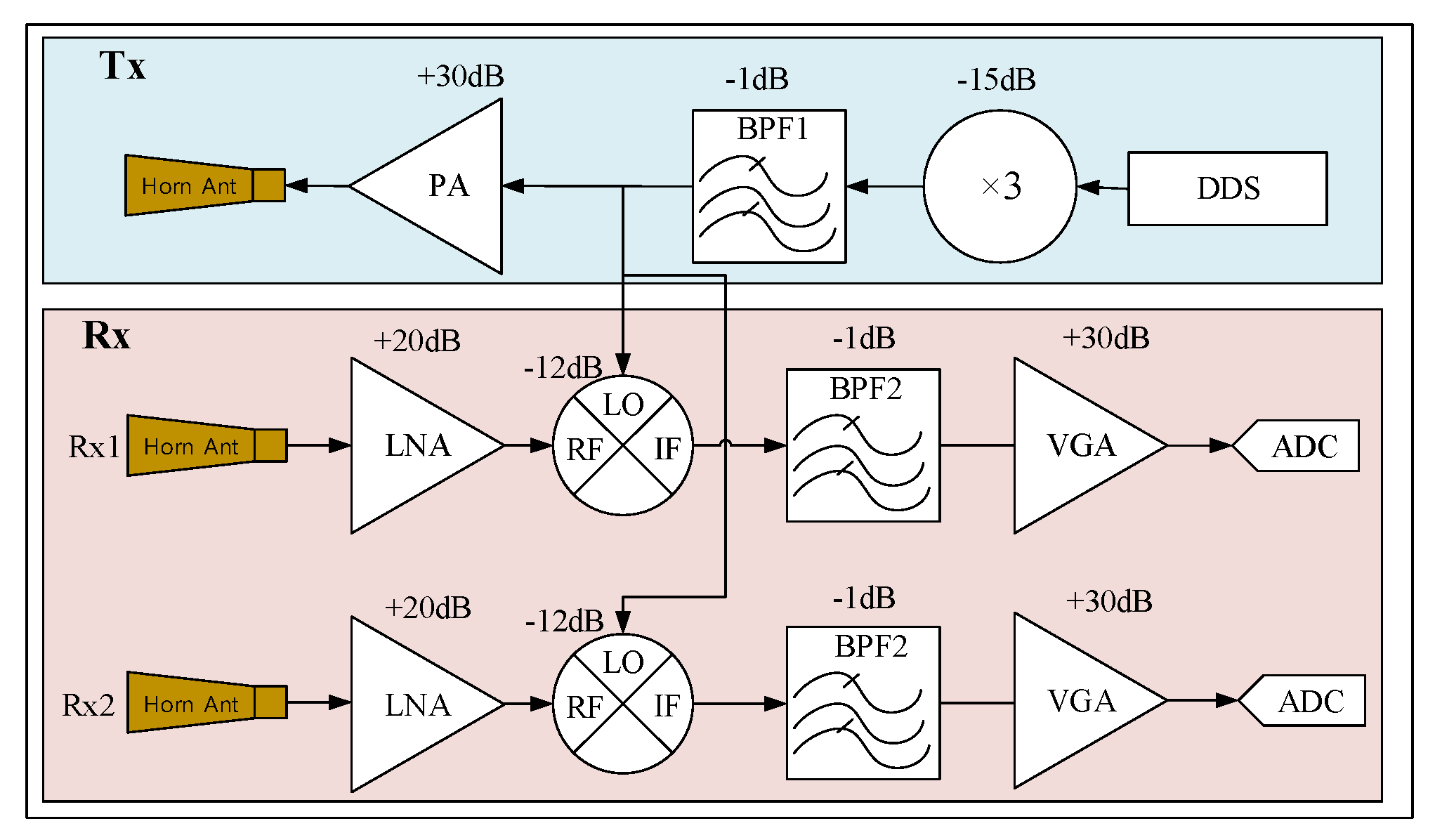
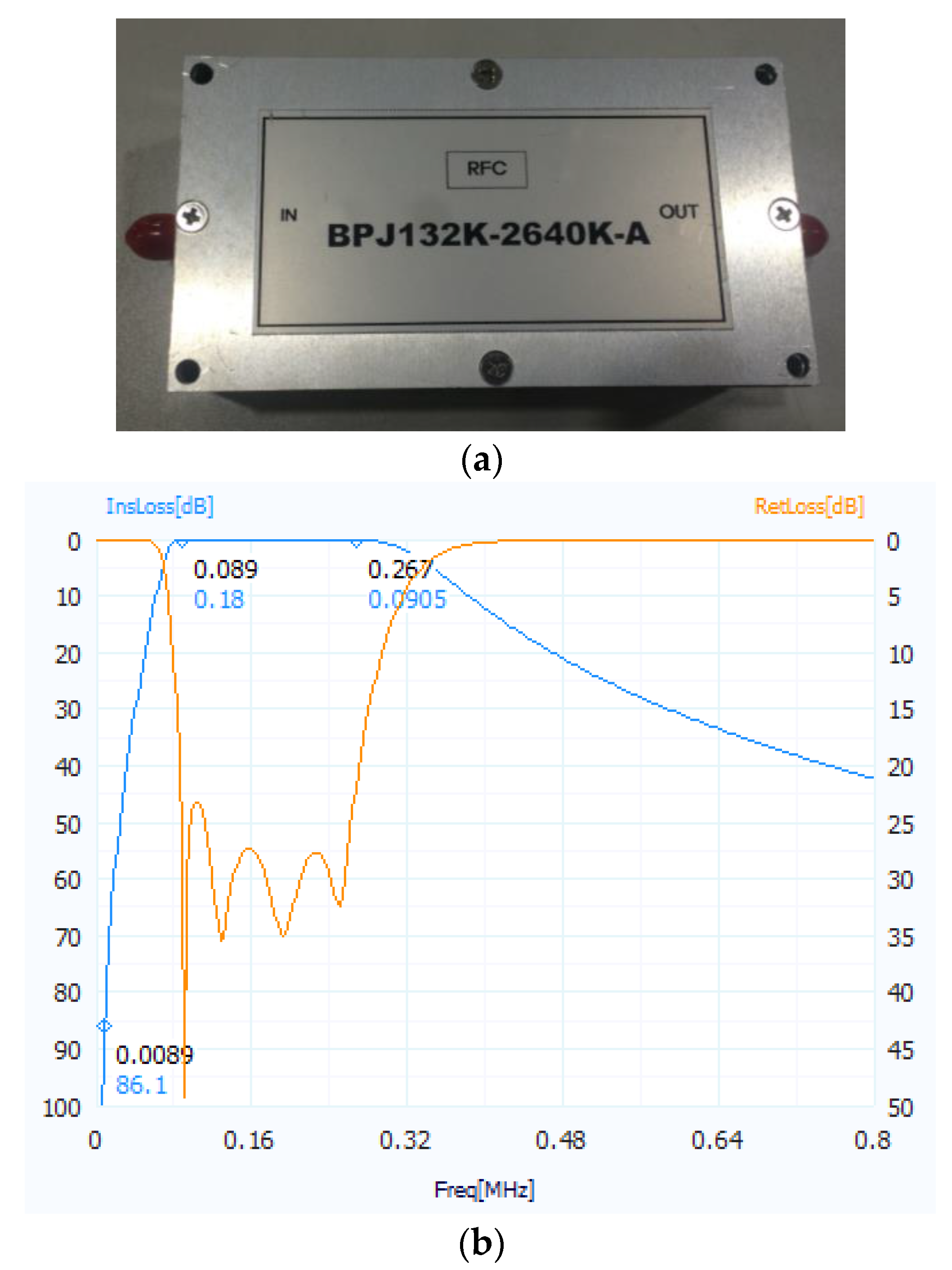
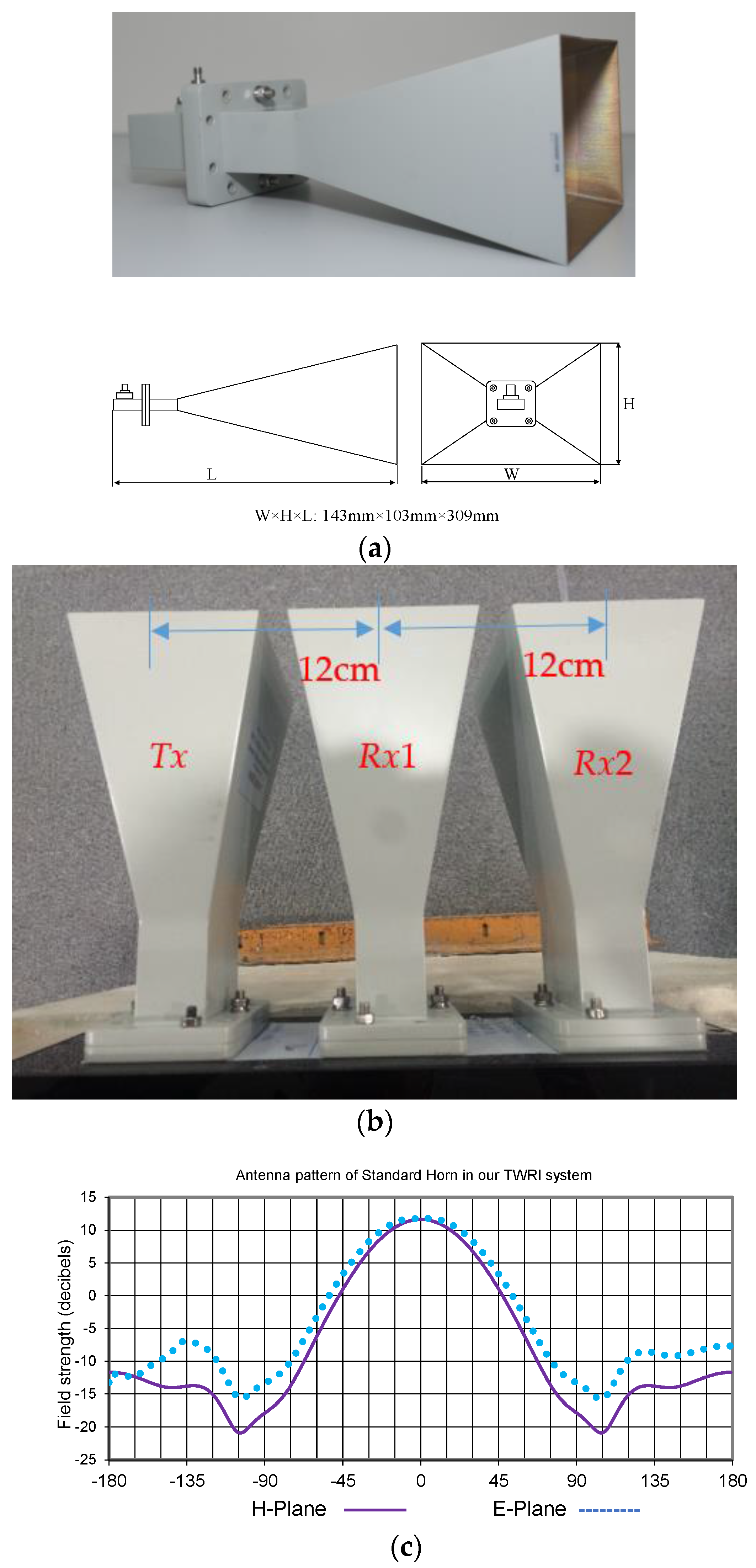
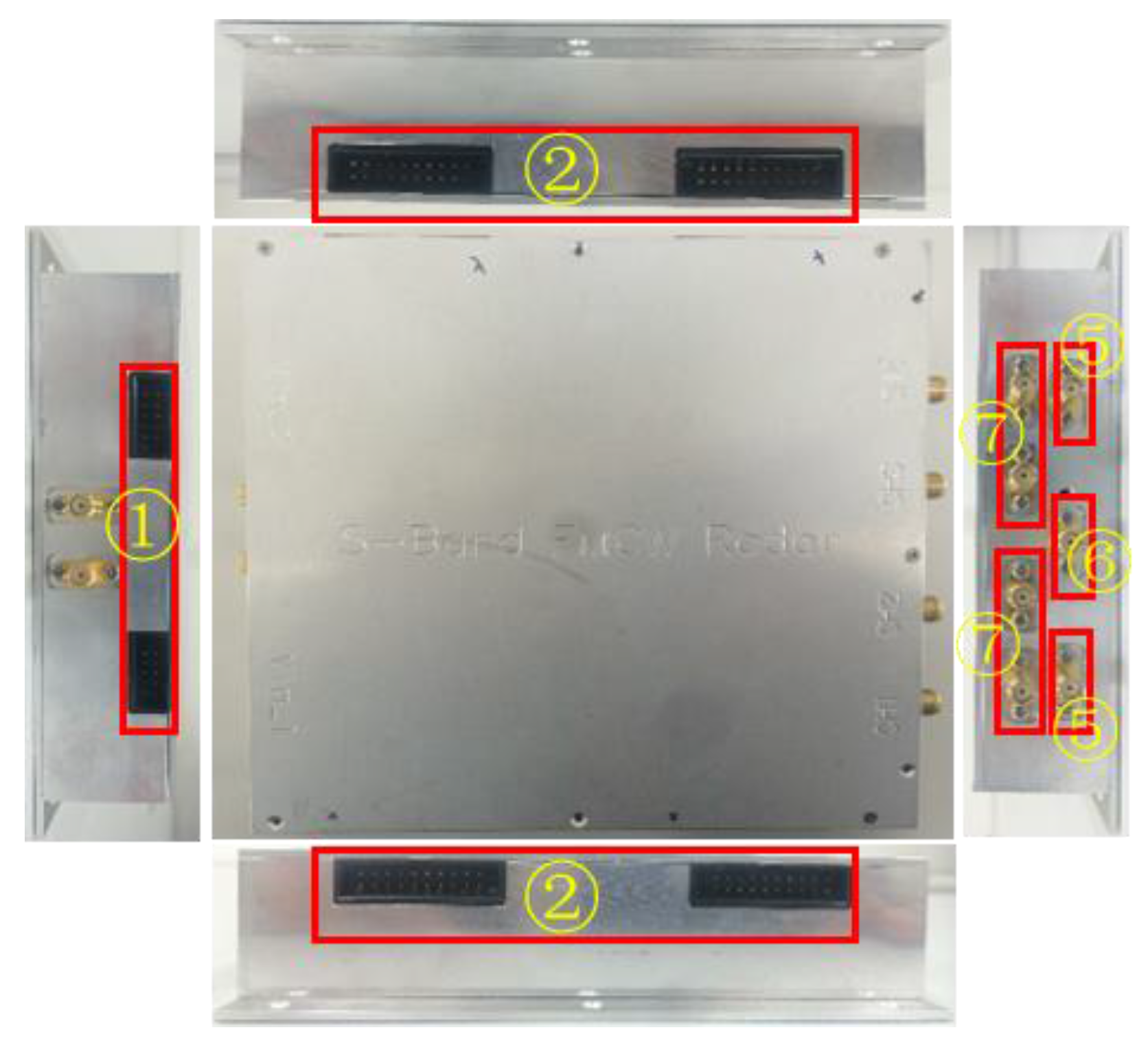
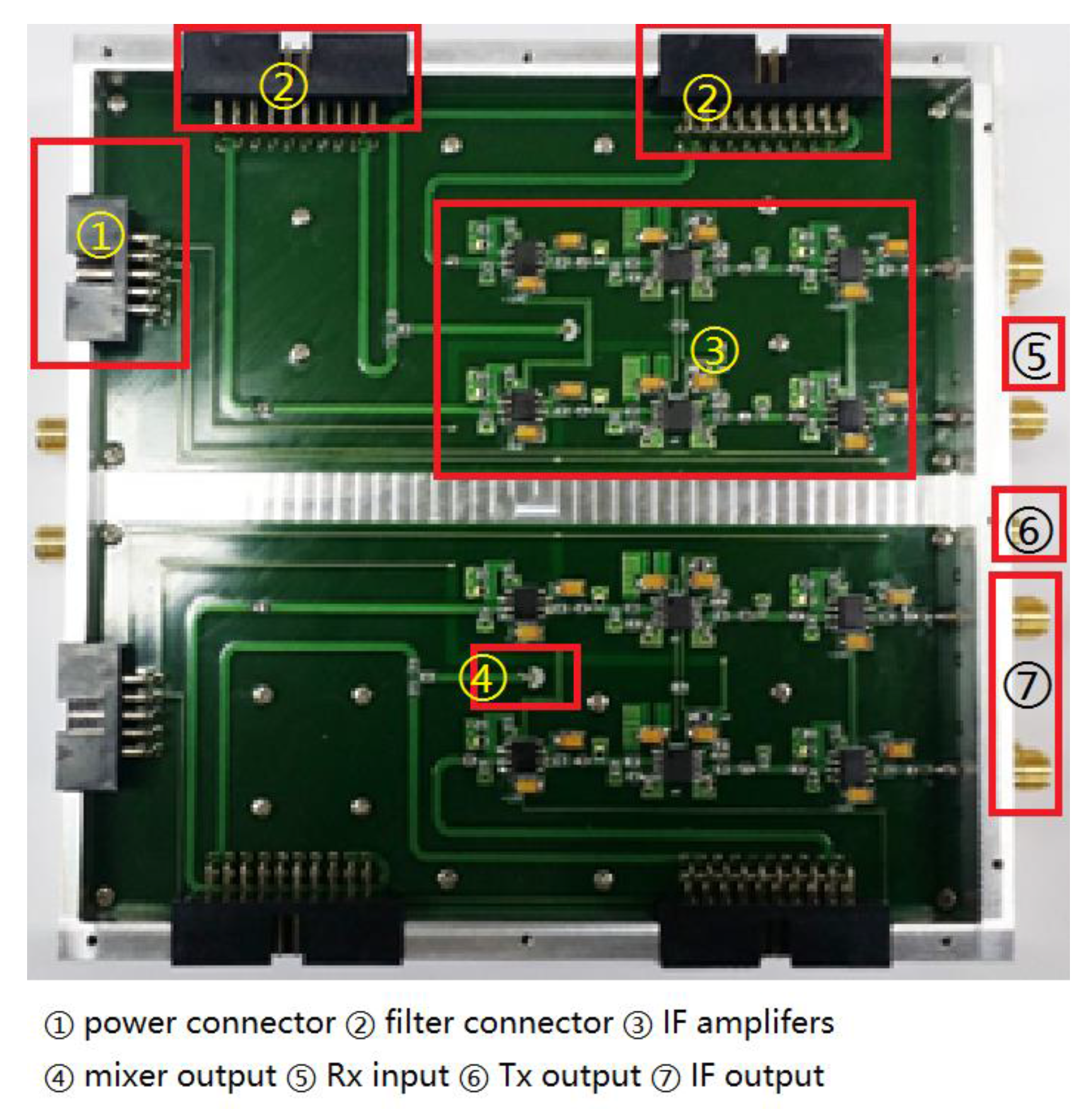

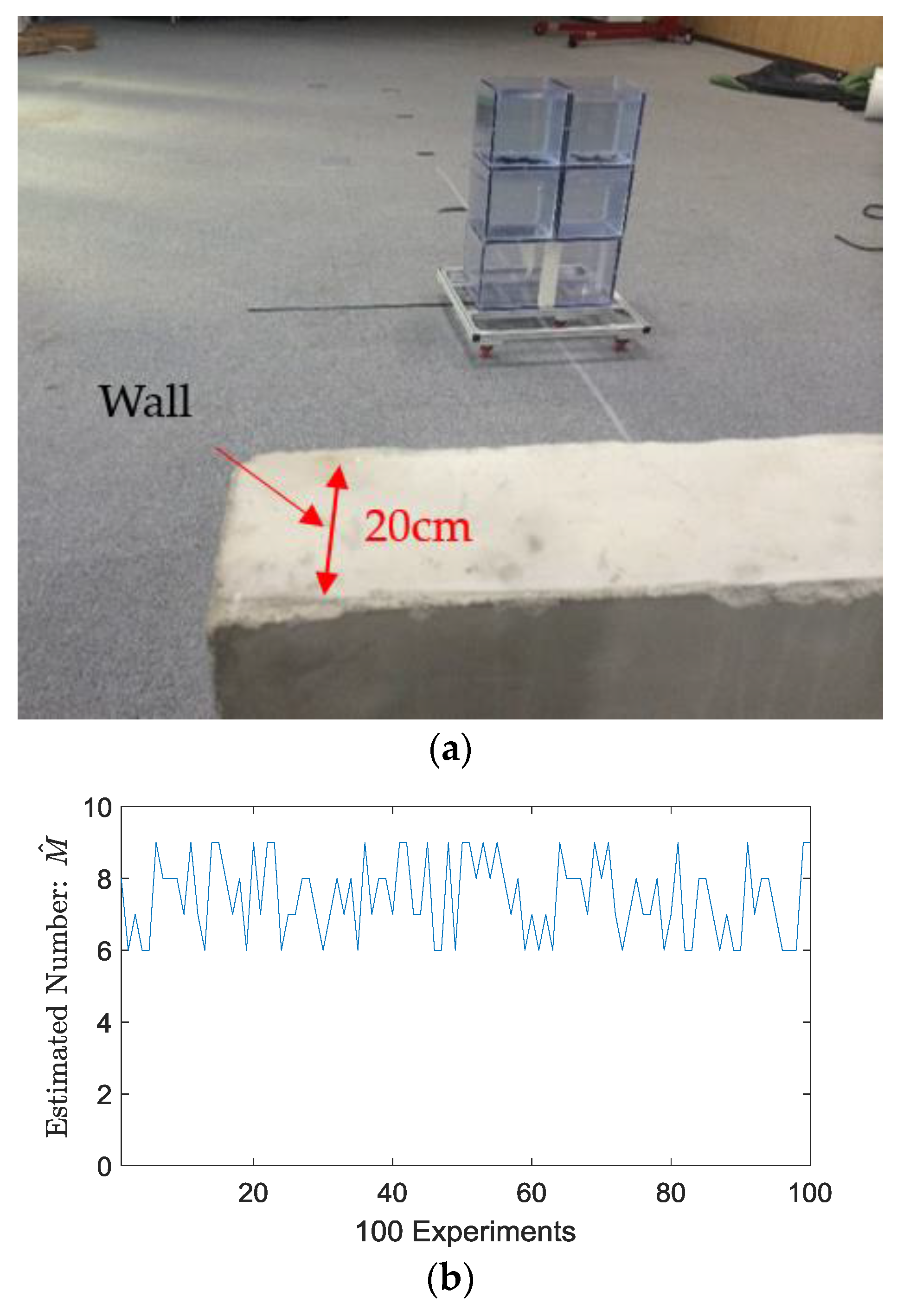


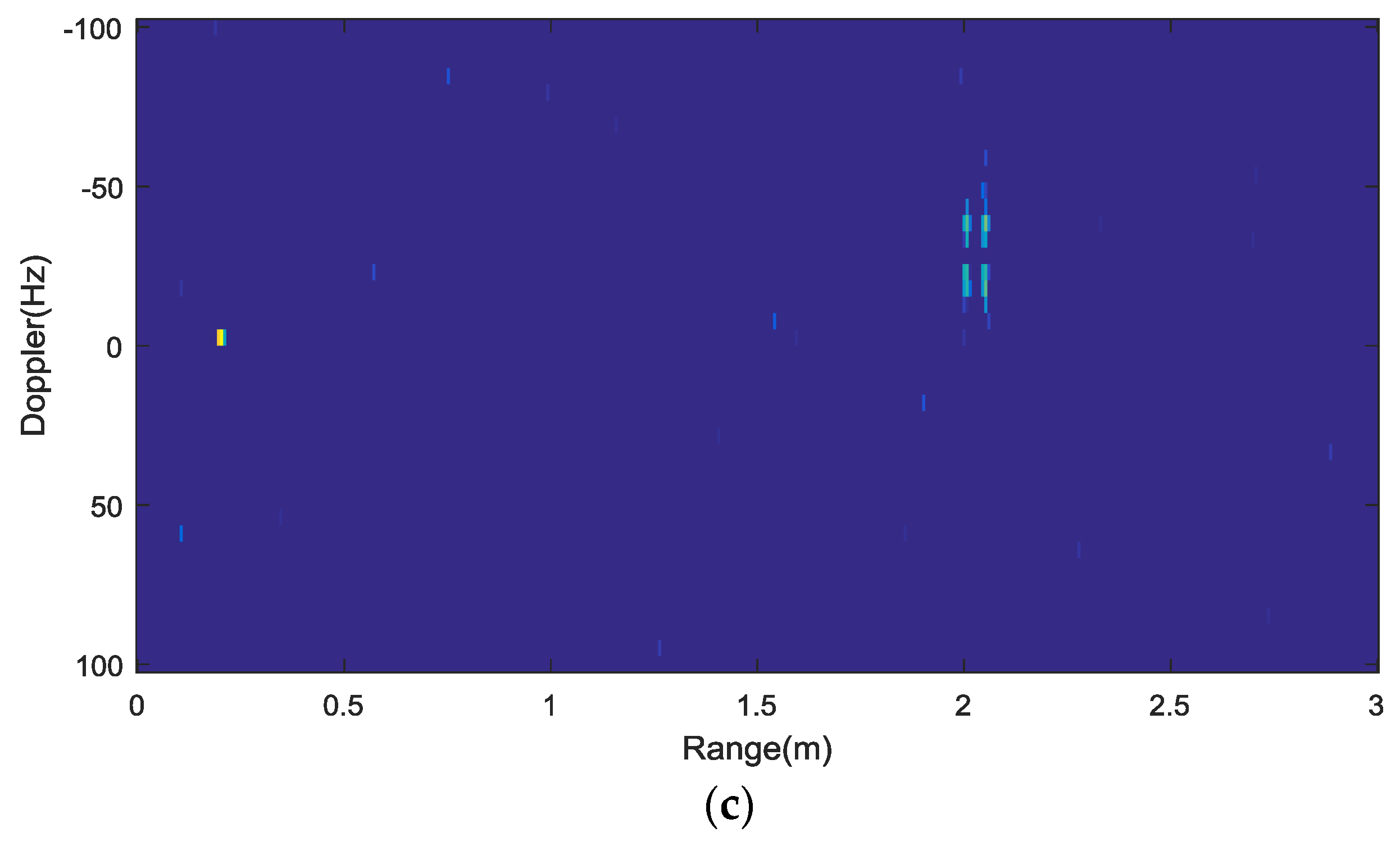
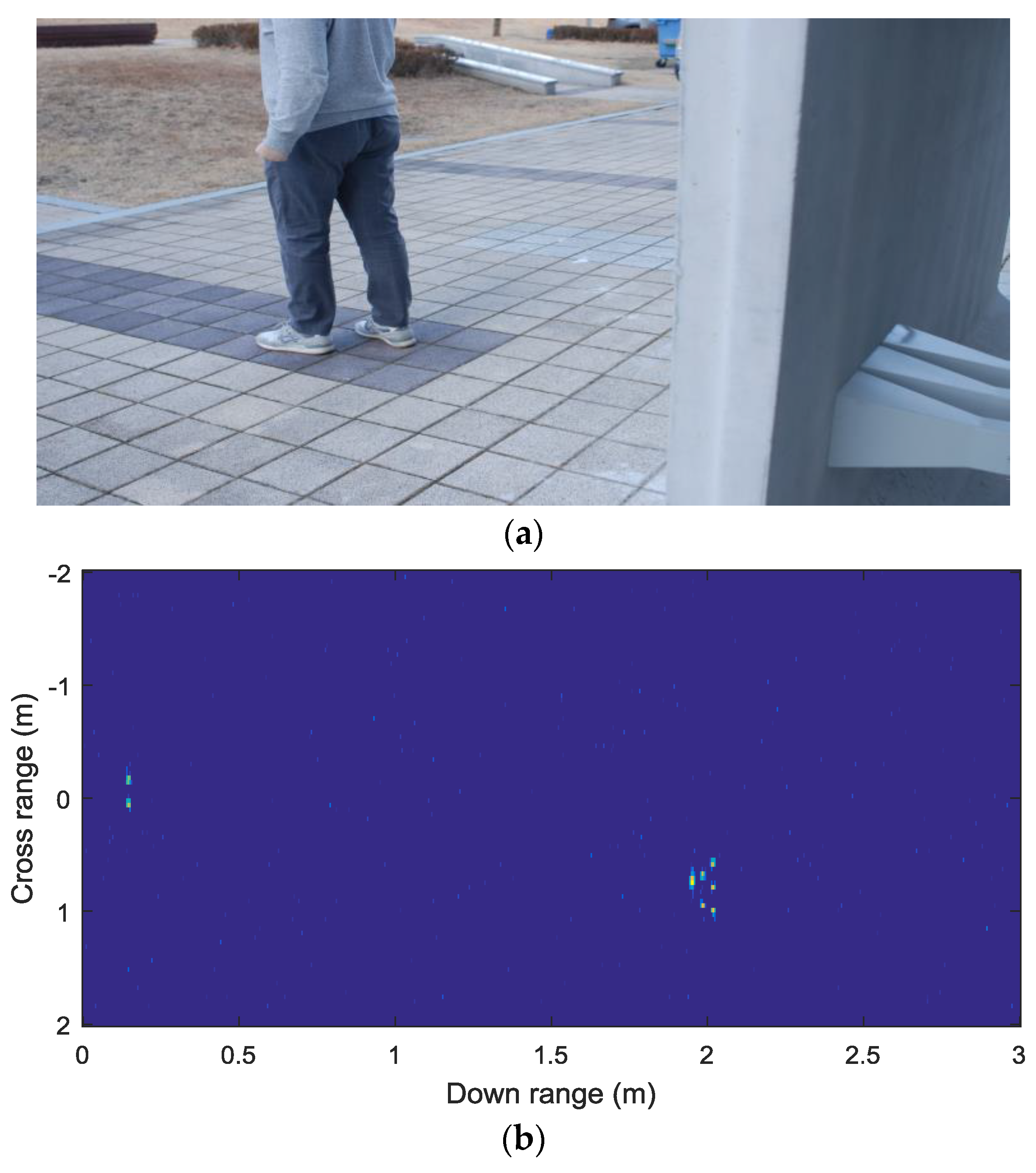
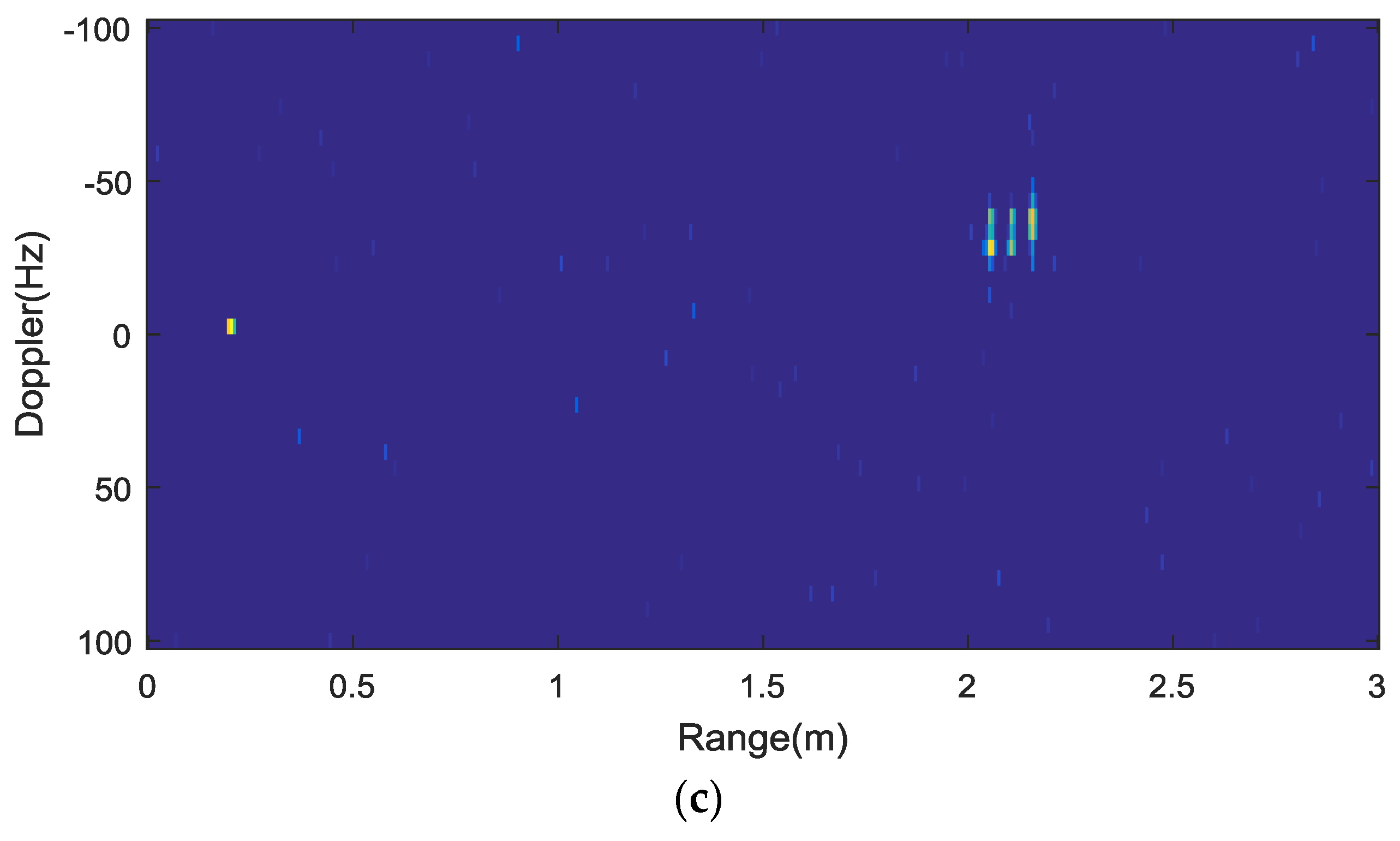
| Parameter | Specification |
|---|---|
| Modulation type | FMCW |
| Receiver | I & Q demodulation |
| Receiver dynamic range | 72 dB |
| Carrier frequency | 2.9 GHz |
| Bandwidth | 600 MHz |
| Peak power | 1 W |
| Velocity resolution | 25 Hz |
| Range resolution | 25 cm |
| Tx and Rx antenna | Standard horn antenna |
© 2018 by the authors. Licensee MDPI, Basel, Switzerland. This article is an open access article distributed under the terms and conditions of the Creative Commons Attribution (CC BY) license (http://creativecommons.org/licenses/by/4.0/).
Share and Cite
Li, Y.-C.; Oh, D.; Kim, S.; Chong, J.-W. Dual Channel S-Band Frequency Modulated Continuous Wave Through-Wall Radar Imaging. Sensors 2018, 18, 311. https://doi.org/10.3390/s18010311
Li Y-C, Oh D, Kim S, Chong J-W. Dual Channel S-Band Frequency Modulated Continuous Wave Through-Wall Radar Imaging. Sensors. 2018; 18(1):311. https://doi.org/10.3390/s18010311
Chicago/Turabian StyleLi, Ying-Chun, Daegun Oh, Sunwoo Kim, and Jong-Wha Chong. 2018. "Dual Channel S-Band Frequency Modulated Continuous Wave Through-Wall Radar Imaging" Sensors 18, no. 1: 311. https://doi.org/10.3390/s18010311





